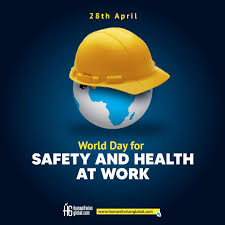Expanding Behavior-Based Safety: Addressing Mental Health in Workplace Safety. Behavior-Based Safety (BBS) has long been a cornerstone of occupational safety strategies, focusing on identifying and modifying unsafe behaviors to reduce workplace accidents. BBS was introduced by H. W. Heinrich in the 1930’s. He asserted that 88% of accidents result from unsafe behavior. BBS has evolved through contributions from behavioral psychologists like B. F. Skinner and modern safety advocates such as E. Scott Geller. Today, BBS tools, such as behavioral observations, feedback, and positive reinforcement, are widely implemented across all industries.
However, BBS is not without its critics. Some argue that it disproportionately places responsibility for safety on workers, overlooking organizational and systemic factors. Leading experts such as Andrew Hopkins and Sidney Dekker have emphasized that unsafe behaviors often stem from broader workplace conditions, including leadership failures and cultural issues.
Another issue is the creation of a culture of blame. Tools like observational checklists can make employees feel unfairly targeted, undermining trust and collaboration in the workplace. Scott Geller and Nancy Leveson emphasize how this can hinder the development of an open and supportive safety culture. Additionally, BBS programs may discourage employees from reporting safety concerns or near misses due to fear of scrutiny, as noted by David Marx and Michael Quinlan.
While these critiques are valid, I believe that BBS has untapped potential to address one critical and often-overlooked area of workplace safety: mental health.
Traditionally, Behavior-Based Safety (BBS) focuses on three main reasons for non-compliance with safety rules: lack of knowledge, underestimating risks, and physical inability to meet safety demands. While these factors explain many incidents, they don’t cover everything. Emotional and psychological states, often referred to as psychosomatic factors, can also contribute to workplace injuries.
Sigmund Freud, the father of psychoanalysis, introduced the idea of “conversion symptoms,” where psychological distress turns into physical symptoms. For example, unresolved anxiety or inner conflict could manifest as pain or even paralysis. Freud’s theories paved the way for modern studies on the link between mental health and physical well-being.
Building on Freud’s work, Franz Alexander, a pioneer in psychosomatic medicine, argued that unresolved psychological tension might lead individuals to take risks or create situations resulting in harm—either as an unconscious release of emotions or a cry for help. For instance, a worker overwhelmed by stress and feeling ignored might subconsciously become less attentive, increasing the risk of an accident.
More recently, authors like Lise Bourbeau and Louise Hay have explored how emotional struggles contribute to injuries. Bourbeau, in “Your Body’s Telling You: Love Yourself,” suggests that injuries can reflect unresolved anger or a need for attention. Hay, in “You Can Heal Your Life,” highlights how negative thoughts and repressed emotions can lead to physical harm. Both authors emphasize the importance of addressing these emotions for prevention and healing.
Research also shows that mental stress at work can lead to high turnover. Prolonged stress causes burnout and dissatisfaction, pushing employees to seek less stressful jobs if alternatives are available (Huang, Qiu, & Wang, 2022.) However, when no options exist, stress builds and may result in accidents. Studies further link high turnover to increased injury rates, as inexperienced new hires are more likely to get hurt (Turner et al., 2019.) While inexperience plays a role, it’s also important to address the systemic issues causing stress and turnover in the first place.
Workplace observations support these ideas. Many EHS managers, including myself, have seen injured employees in non-critical cases express relief during the subsequent investigations. It often seems like an opportunity for them to share frustrations or unmet needs, indirectly pointing to emotional neglect as a contributing factor in some injuries.
Let’s consider a real case study. During the COVID-19 pandemic, a contractor’s employee quit suddenly, forcing the company to quickly hire a replacement. A young and inexperienced worker was sent to the client’s site after completing basic safety training, which covered chemical handling, but didn’t address stress management or mental health.
Determined to prove himself, the worker struggled to keep pace with his experienced colleagues. His growing anxiety led him to skip breaks and intensify his stress. One day, feeling exhausted and thirsty, he grabbed a bottle from his desk and drank its contents without checking. It turned out to be disinfectant, being stored in a reused beverage bottle. The worker suffered burns to his esophagus and was hospitalized.
The company later implemented corrective measures, including specialized containers for chemicals and branded water bottles for workers. However, the incident highlighted systemic issues, such as overlooked mental health support and inadequate safety practices. The injury acted as an unconscious cry for help, exposing deeper workplace problems and the need for a holistic safety approach.
By understanding these connections, EHS managers can expand safety strategies to include mental health support, reducing both accidents and the emotional strain that contributes to them.
At its core, BBS is about building trust and fostering open communication. During observations, many programs teach supervisors to approach workers with sensitivity, provide positive reinforcement, and encourage employees to share their ideas and concerns. Unfortunately, many supervisors don’t see the value in these steps and prefer a more formal approach to the task. However, understanding that these practices also contribute to creating a healthy workplace environment can significantly improve the quality and effectiveness of observations.
One evening, after a particularly difficult meeting, I was walking home. It had been a tough discussion, and I decided to take a walk to clear my mind. I felt completely drained and thought no one cared about safety as much as I did.
As I was walking, a young observer stopped me. She noticed that I hadn’t switched from my regular glasses to safety glasses, which were required for walking in the pedestrian areas. She didn’t know who I was, but seemed genuinely concerned that dust or wooden chips could get into my eyes.
At first, I felt frustrated with myself. How could I, a safety manager, forget something so basic? But at the same time, I was touched to see someone who truly cared about my safety.
Each observer handles such situations differently. Some make formal remarks and insist on immediate corrections. Others lecture people and try to teach them a lesson. This young observer showed genuine care and kindness. Her approach made a difference.
Her concern gave me a new sense of purpose. I realized that my work wasn’t pointless. At the next meeting, I had the strength to push for better safety measures for everyone.
This kind of sincere involvement doesn’t just help people follow rules. It also makes a big difference for the mental health of employees. It creates a sense of trust and support.
The management often sets different goals for observers, such as a required number of observations or a specific number of hazardous situations identified. While these goals can drive activity, they can also lead to a formalistic approach, where the true purpose of the program is lost. In my opinion, a better approach would involve requiring observers to report on each field visit, including how many people they interacted with, how many conversations they had, and whether there were any situations requiring leadership’s attention. Additionally, when preparing observers, training should emphasize the importance of maintaining a positive and constructive dialogue. This not only improves compliance but also fosters a culture of mutual respect and trust.
However, effective observations are just one piece of the puzzle. To build a truly holistic safety culture, it’s essential to integrate other BBS initiatives that prioritize both physical and mental well-being. These initiatives include:
- Anonymous safety surveys: These allow employees to report concerns without fear of retaliation, uncovering stressors or safety issues that might otherwise go unnoticed and fostering a sense of psychological safety.
- Interactive in-person training sessions: These provide a platform for workers to share their concerns directly with EHS managers, encouraging open communication and demonstrating that their voices are valued.
- Safety visits by senior leadership: People who Directly report to the CEO or other top executives lead these workshops, ensuring that employees receive critical updates firsthand and feel connected to broader organizational goals.
- New-hire safety audits: EHS managers follow up with recently hired employees to assess how well they are adapting to the workplace, identify potential stressors, and address any concerns early in their tenure.
- Toolbox talks: These short, focused discussions not only reinforce physical safety measures, but also create space to address mental health topics, promoting ongoing dialogue about well-being and building a culture of care.
By implementing these complementary strategies, organizations can go beyond compliance and actively support their workforce’s mental and emotional health. These efforts not only improve safety outcomes but also cultivate a workplace where employees feel valued, heard, and empowered to thrive.
Referenses:
- Huang, C., Qiu, C., & Wang, J. (2022). Impact of work stress and job burnout on turnover intentions among hotel employees. International Journal of Environmental Research and Public Health, 19(7), 4152. https://doi.org/10.3390/ijerph19074152
- Turner, N., Nielsen, M. B., Finne, L. B., & Saksvik, P. Ø. (2019). Association between occupational injury and subsequent employment termination among newly hired manufacturing workers. International Journal of Environmental Research and Public Health, 16(3), 433. https://doi.org/10.3390/ijerph16030433
This article was written by Olga. Olga Bodiagina is an experienced Environmental, Health, and Safety (EHS) professional with 18+ years in manufacturing, construction, and food production. I have led safety and environmental initiatives at KBR, Otis Elevator Co., and Saint-Gobain and hold a Master’s degree in Forestry, along with certifications in Occupational Safety and ISO standards.






